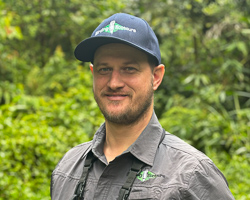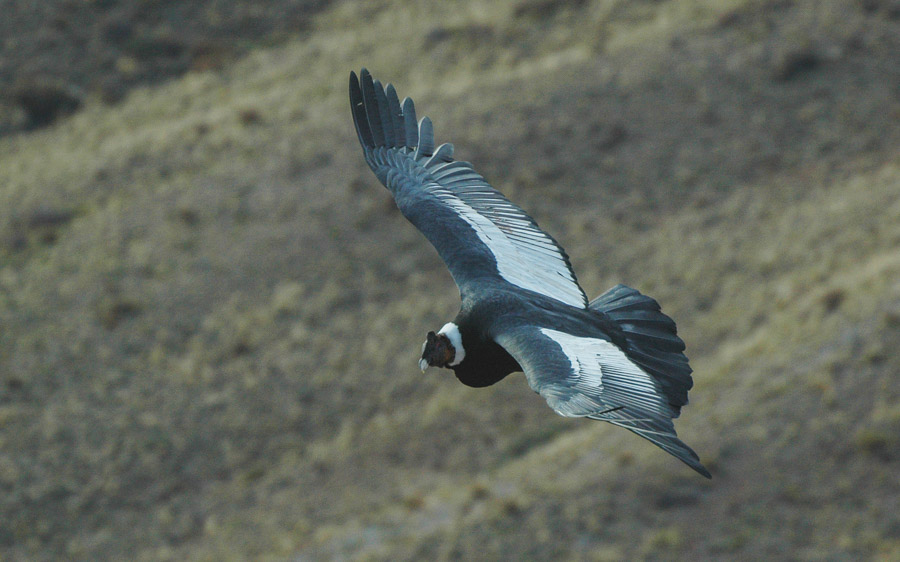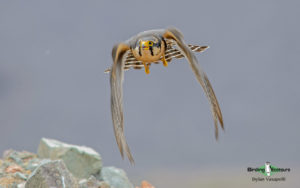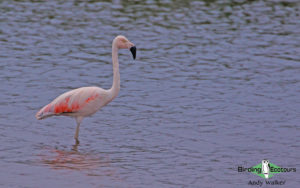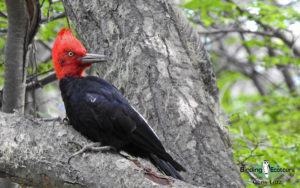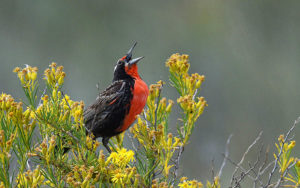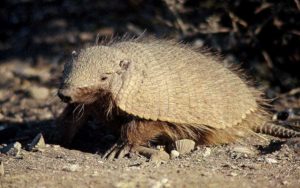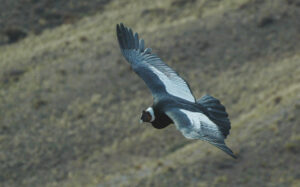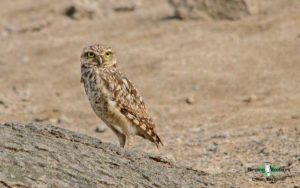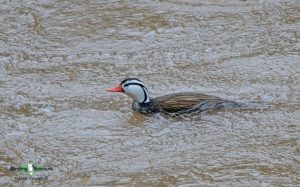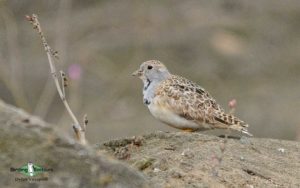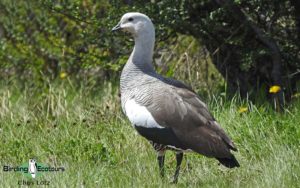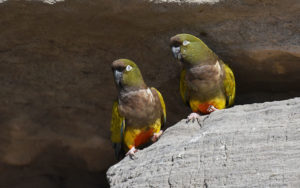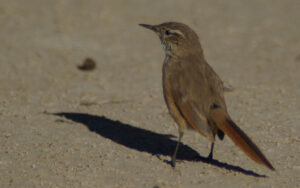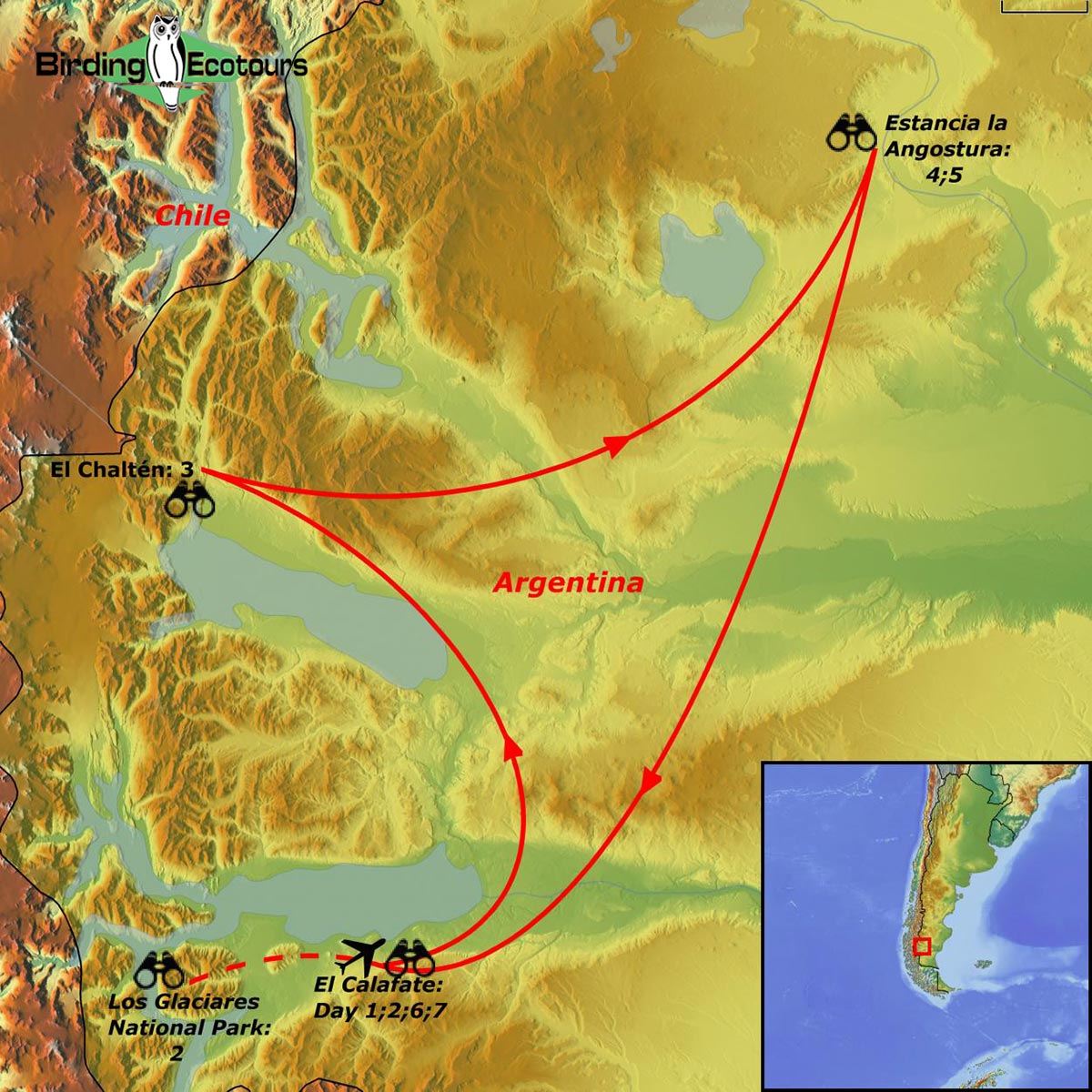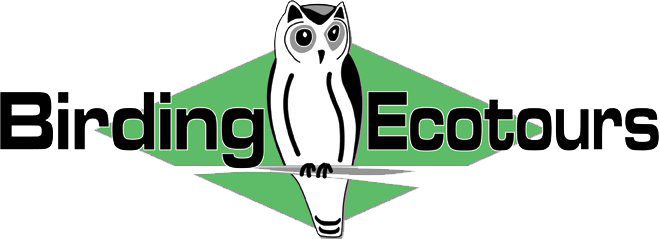Southern Patagonia: Los Glaciares National Park, Austral Rail and Hooded Grebe
Southern Patagonia: Los Glaciares National Park, Austral Rail and Hooded Grebe
November 2025/2026
This tour combines some of the most diverse birding areas of the Southern Cone in Argentina: Los Glaciares National Park and the vast steppes of southern Patagonia. The region hosts a wide diversity of habitats, such as massive glaciers that flow from the vast Southern Patagonian Ice Field, thick deciduous and evergreen forests, vast steppes, rivers, snow-capped peaks, wetlands, and mountain grasslands, all home to a wide diversity of birds. Some of the birds we’ll be looking for include Magellanic Woodpecker (the largest woodpecker in South America), the rare Austral Rail, the Critically Endangered Hooded Grebe at Strobel Plateau, and the healthiest population of Andean Condors on the continent.
Andean Condor (photo Alejandro Ronchetti) is one of our targets on this southern Patagonia tour.
This tour can be combined with one or both of our preceding Argentina birding tours: Argentina – Northwest from the foothills to Puna followed by our Northeast – Iberá Marshland and Iguazú National Park.
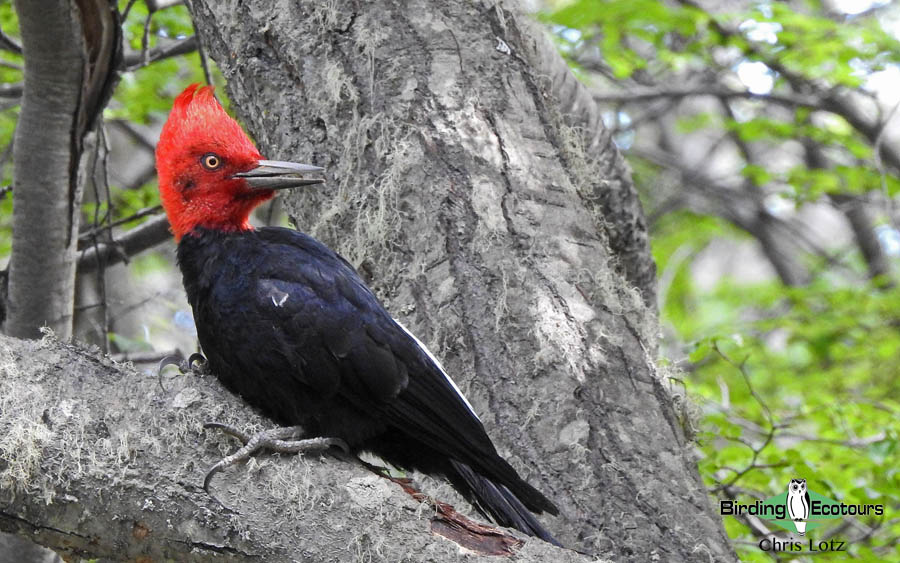
Itinerary (7 days/6 nights)
Day 1. El Calafate
This exciting birding trip will begin at the El Calafate International Airport, located near the enormous Argentino Lake. After lunch we will visit the Laguna Nimez Natural Reserve, an urban wildlife preserve that protects this impressive wetland. Here we hope to find Magellanic Plover, Chilean Flamingo, Upland Goose, Red Shoveler, White-winged Coot, Cinereous Harrier, Austral Negrito, and Chilean Swallow, among many others.
Overnight: Hotel Mirador del Lago, El Calafate
Day 2. Los Glaciares National Park
Today we will spend the entire day visiting the Los Glaciares National Park. Along the drive across the Patagonian steppes we may encounter Black-chested Buzzard-Eagle, Variable Hawk, Short-billed Miner, Sharp-billed Canastero, Scale-throated Earthcreeper, White-browed Ground Tyrant, and Patagonian Yellow Finch. We will visit the Perito Moreno Glacier, one of the few glaciers on earth still advancing. At the beech forest around the glacier we should see Austral Parakeet, Thorn-tailed Rayadito, Austral Blackbird, Black-chinned Siskin, and many more.
Later in the day we will also visit a group of ponds, where we might see the likes of Andean Duck, Magellanic Oystercatcher, Black-necked Swan, and Wren-like Rushbird.
Overnight: Hotel Mirador del Lago, El Calafate
Day 3. El Chaltén
Today we will head north driving across the Patagonian steppes and badlands, where we hope to find Lesser Rhea, Patagonian Tinamou, Least Seedsnipe, Aplomado Falcon, Rufous-chested Dotterel, Long-tailed Meadowlark, Cordilleran Canastero, and Band-tailed Earthcreeper. After a four-hour drive we will arrive at El Chaltén, a small town located at the foot of Monte Fitz Roy, one of the most iconic mountain peaks in Patagonia.
In the afternoon we will drive to a series of rapids at the Las Vueltas River, where we hope to see Torrent Duck. In this area we will also target Magellanic Woodpecker, the largest South American woodpecker, along with Ashy-headed Goose, Lesser Horned Owl, Austral Pygmy Owl, Bronze-winged Duck, White-throated Treerunner, Dark-bellied Cinclodes, Patagonian Tyrant, Ochre-naped Ground Tyrant, and Diuca Finch.
Overnight: Hotel Lunajuim, El Chaltén
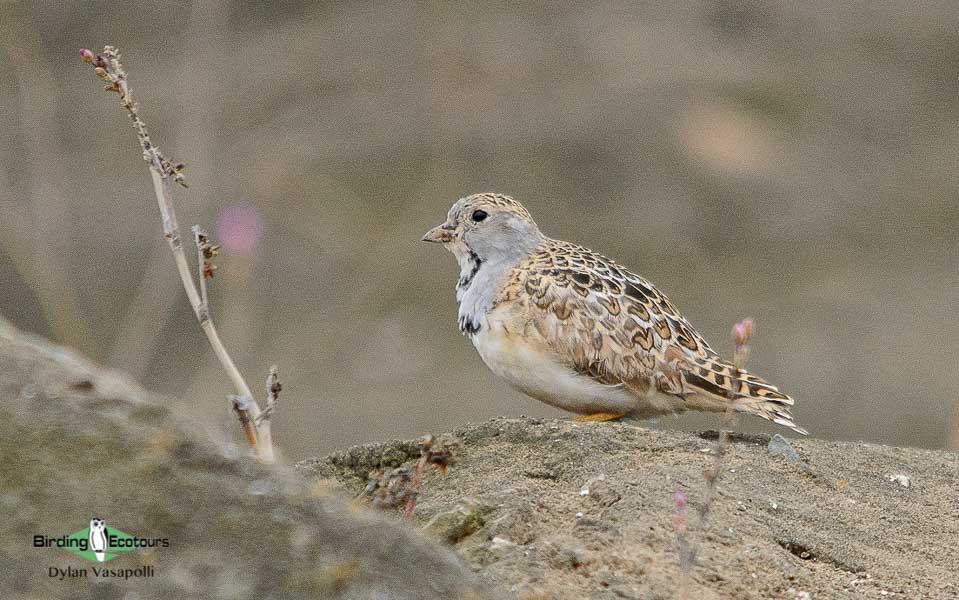
Day 4: El Chaltén to Estancia la Angostura
We’ll have an early departure for our long drive northward across the Patagonian steppes and semi-deserts, with stops en route, before reaching Estancia La Angostura. This cattle ranch hosts numerous wetlands where the extremely rare and Endangered Austral Rail has been recorded on numerous occasions. The afternoon will be spent in search of this rarity in the reed beds and along the pond edges. Today we should also see Andean Condor, White-throated Caracara, Black-faced Ibis, Austral Negrito, Chocolate-vented Tyrant, Grey-bellied Shrike-Tyrant, and Greater Yellow Finch.
Overnight: Estancia la Angostura
Day 5. Estancia la Angostura
We have the full day to search for our primary target, Austral Rail. We will also visit some nearby ponds to look for Black-necked and Coscoroba Swans, Flying Steamer Duck, Crested Caracara, Bicolored Hawk, Tawny-throated Dotterel, Grey-breasted Seedsnipe, Chilean Flicker, Austral Canastero, Tufted Tit-Tyrant, Great Shrike-Tyrant, Patagonian Yellow Finch, Patagonian Sierra Finch, and Yellow-bridled Finch.
Overnight: Estancia la Angostura
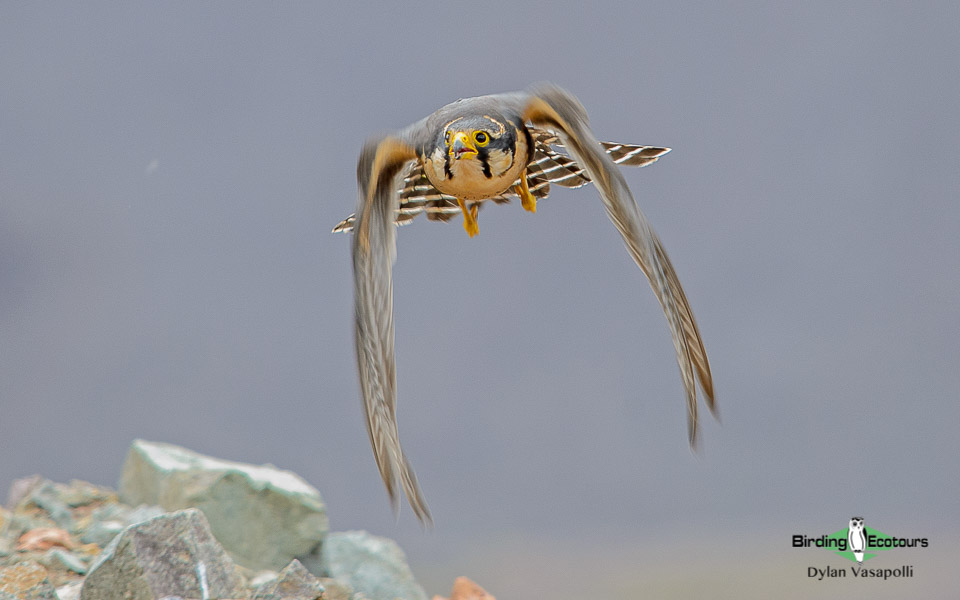
Day 6. Strobel Plateau for Hooded Grebe
Today we have an exciting full-day trip to Laguna Verde and other ponds and lakes on the extensive basaltic landscapes of Strobel Plateau. The expedition to the Strobel Plateau will require the use of 4×4 vehicles from a nearby sheep ranch, due to the difficult terrain of the rocky steppes.
Here the Critically Endangered Hooded Grebe nests in small colonies in a few of the ponds which are protected from the wild winds of the Patagonian steppes. A few other species also share this habitat in the form of Silvery Grebe, Fuegian Steamer Duck, Chilean Flamingo, Upland Goose, Magellanic Plover, Least Seedsnipe and Long-tailed Meadowlark.
Overnight: Estancia la Angostura
Day 7. Departure
We will drive back to El Calafate with some birding on the way, with a six-hour drive ahead of us today. Our route will lead across the Patagonian steppes, wetlands, and patches of beech forests. On the drive we may find Patagonian Tinamou, Burrowing Parrot and Bronze-winged Duck, as well as mammals such as Guanaco (a wild relative of the llama) and perhaps even Large Hairy Armadillo. Today will mark the end of seven days of fantastic birding and scenery in southern Patagonia. We will organize transfers for you to the El Calafate International Airport to board your departure flights.
Please note that the itinerary cannot be guaranteed as it is only a rough guide and can be changed (usually slightly) due to factors such as availability of accommodation, updated information on the state of accommodation, roads, or birding sites, the discretion of the guides and other factors. In addition, we sometimes have to use a different international guide from the one advertised due to tour scheduling.
Download ItineraryBirding Southern Patagonia: Los Glaciares National Park, Austral Rail, And Hooded Grebe
Tour-Specific Information
PLEASE CLICK HERE FOR GENERAL INFORMATION PERTAINING TO OUR ARGENTINA TOURS
This short and thrilling Argentinian birding tour will allow you to explore the fantastic Southern Patagonia region of Argentina. The region hosts a wide diversity of habitats, such as massive glaciers that flow from the vast Southern Patagonian Ice Field, thick deciduous and evergreen forests, vast steppes, rivers, snow-capped peaks, wetlands, and mountain grasslands, all home to a wide diversity of birds. Some of the big targets on this Patagonia birding tour include Hooded Grebe, Torrent Duck, Magellanic Plover, Andean Condor, Austral Rail, and Magellanic Woodpecker. The following information, in combination with the Argentina general information (see link at top of the page), will help you prepare for your Southern Patagonia birding tour.
ARRIVAL AND DEPARTURE INFORMATION
Please e-mail us ([email protected]) or contact us in a different way if preferred, before you book any flights, as the information shown here is just an initial guide.
Our tour will start and end in the city of El Calafate at the El Calafate International Airport (also known as Comandante Armando Tola International Airport), with the airport code FTE. It is an approximate three hour flight from Buenos Aires. Our local team will be waiting for you at the airport with a small board with your name/the Birding Ecotours logo and will then transfer you to your hotel.
If you prefer to rest before the start of the trip, we suggest you arrive a day or so early to have plenty of time to recover after long fights, jetlag, etc. Please let us know, at your earliest convenience, if you wish us to book you into accommodation for extra nights before (or after) the tour.
In case you arrive on an early flight, you will be transferred to the hotel but may have to wait until check in is available. For an early check in you might be charged extra directly by the hotel; this cost is excluded from the Birding Ecotours tour price. Regular check in is at 14.00 hrs.
When filling out the customs declaration form, or if you are asked at the immigration desk, please use the below address for the hotel:
Hotel El Quijote, Gobernador Gregores, 1191, El Calafate, Santa Cruz Patagonia. Tel: (+54) 011-54035-3662 (WhatsApp only) and (+54) 02902-491017.
Note that at the end of the tour (on Day 7), it’s likely that you will need to take an evening flight out of El Calafate back to Buenos Aires and your onward connection or travel. Please check your flight times with us before purchasing tickets, you may require an additional night of accommodation in Buenos Aires. We can also likely arrange a flight for you from El Calafate back to Buenos Aires, please just ask us about this.
DOMESTIC FLIGHTS
There are no domestic flights required as part of this tour, however you will likely need to take one between El Calafate and Buenos Aires at the start/end of the tour. Please make yourself aware of baggage allowances, which will likely be:
- 1x piece (small bag such a laptop case) of 3 kg. (6.6 lbs.) for carry-on under seat luggage
- 1x bag 8 kg. (17.6 lbs.) carry-on overhead luggage
- 1x piece of luggage of 15 kg. (33 lbs.) as checked luggage
PHYSICAL REQUIREMENTS AND PACE
The majority of this tour is considered to be either easy or moderate, with short birding walks. However, please see the “Hooded Grebe Day Trip” section below for information on the slightly more demanding hike (and 4 x 4 drive) involved to search for this globally rare species, and other important information to consider about this day trip.
Most walks during the tour should be short distances, spending quality time birding along roads near the vehicles. We will sometimes do walks perhaps up to 0.6 miles (one kilometer) from the vehicles in search of some key species. We expect to walk along roads, sidewalks, wooden boardwalks, sandy, rocky, and dusty terrain. We may also need to make some short, steep walks, perhaps between 33 and 164 feet (10 and 50 meters), if needed, to approach some key species. We will not face long, strenuous mountain hikes except for those who join the Hooded Grebe day trip or the Ushuaia extension in search of the White-bellied Seedsnipe.
Our usual daily routine will involve morning and afternoon birding, with a break for lunch back at our accommodation in the middle of the day (if the schedule allows). Sometimes, when we are travelling between different overnight locations, we will try and do some morning birding before we make our journey, with further birding at our final destination. Each evening, we will discuss the plans for the following day so that everyone knows what’s going on.
Note that the weather in this part of South America can make birding, photography, or even just walking, difficult due to occasional strong winds (see the “Weather” section below). If the wind is not considered dangerous we will try to continue birding. If it does become dangerous, we will have to heed the advice of our local team, who know the conditions and the areas very well. Care should be taken if using scopes and cameras on tripods, as there is a risk they may blow over and be damaged in strong wind.
We cover quite a bit of ground on this tour and there are some moderate drives between our overnight destinations. These will be made in a van with enough space for the whole group. We do ask that you pack as lightly as possible for the trip. In addition, when we make our Hooded Grebe day trip, there will be a long 4 x 4 jeep drive (probably 2.5 hrs. each way) and we will likely split the group across multiple vehicles, depending on the final size of the group. It is expected that all participants should be fit and mobile enough to get in and out of the vehicles by themselves and move around the van/vehicles to allow everyone opportunities at the front/back.
Note that Argentina is notorious for having late dinners, which is quite foreign to most of us and not ideal when on a birding tour, when an early night is preferred! We will do our best to try and secure dinners for as early as possible, but please be aware that this is still likely to be at around 19:30-20:00 hrs. (sometimes the restaurants don’t open until these hours), or later. Thus, early nights are often not possible, without skipping meals. A supply of snacks might be beneficial to fill in the gaps between meal times.
ALTITUDE
Our tour will spend time at a range of elevations but shouldn’t cause any issues. We will spend three nights in El Calafate, at an elevation of 656 feet (199 meters), we will spend one night in El Chaltén at approximately 1,475 feet (450 meters), and we will have three nights near La Angostura, where the elevation is approximately 2,850 feet (870 meters). The bases for our accommodation are unlikely to cause any issues with altitude sickness, though we will be spending time birding at higher elevations and may also reach higher altitudes when traveling.
Spending a few hours at high elevation is not normally a problem, nevertheless, some minor symptoms might appear, such as a slight headache and mild dizziness. A regular Paracetamol tablet, taken two hours before we reach high elevations, often prevents any headache trouble. We suggest you avoid eating a large dinner on the previous night (before visiting high altitudes), this will aid with easier digestion. Please inform your tour leader if you experience any symptoms of altitude sickness.
WEATHER
Our Southern Patagonia tour occurs in mid-November, which is spring in this temperate part of the country and is generally a mild month. We can expect daytime temperatures in El Calafate ranging from 39oF (4oC) to 61oF (16oC), with an average temperature of 50oF (10oC). On the coldest nights of the month, the temperature can drop to around 28oF (-2oC). Rainfall amounts during November are likely to be low, with only two days of rain expected during the month, with an average precipitation of 0.3 inches (7 millimeters) during the month. There is an average of nine hours sunshine per day during November, and average daylight time of around 15.5 hrs., so the days are long, giving plenty of birding time. Sunrise is around 05:45 hrs. and sunset is around 21:20 hrs. Humidity is expected to be low (39% on average). The average wind speed at this time of year is 10.5 miles per hours (17 kilometers per hour), however wind storms are a frequent issue (see important bold note below).
At times during this tour, we will be at higher elevation than El Calafate, and so temperatures should be expected to be lower, precipitation could be higher, and the wind could be stronger than the figures mentioned above. If the wind comes from the south this can cause a reduction in temperatures (wind chill).
Please note that due its geography, the Patagonia region is prone to experiencing strong winds of 43 miles per hour (mph) (70 kilometers per hour (km/h), and rarely during this time of the year, winds could even reach speeds of over 60 mph (100 km/h). We will be cautious about the weather and wind, and we hope this will not affect our birding schedule, but please note that for the sake of personal safety the daily activities could be delayed, rescheduled, or even cancelled if the windy conditions are considered to be a threat to personal safety. We will try to pay attention to any weather forecast information we can obtain.
HOODED GREBE DAY TRIP
Hooded Grebe is a Critically Endangered (BirdLife International) species and a big target on this tour. Its global population is estimated to be only 650-800 mature individuals (2019) and it is considered an Argentinian breeding endemic. For this tour we will take a full day trip to search for the grebe, and it will likely be a slightly more demanding day than the other days on the tour.
We will drive in 4 x 4 vehicles (the number of vehicles will depend on the final group size) from our accommodation at La Angostura to our jump off point. This journey will be across farmland/steppes on “roads”/jeep tracks and ranch land for approximately 2.5 hours. Once we exit the vehicles, we will have an hour long walk on relatively flat terrain, on what is considered an “easy” walk, to a lake to look for the grebe. We hope that our plans will not be disrupted by windy conditions (see “Weather” section above). If we cannot find the grebe at the first lake we will walk to another lake, approximately 35-45 minutes away, across similar “easy” terrain. Once we’ve finished birding, we’ll walk back to our vehicles and drive back to our accommodation, where we are likely to arrive in the late afternoon.
For this day trip, we will carry our own food and drink (locally supplied), we will have a picnic breakfast and picnic lunch. Everyone will have to carry their own important items, such as extra layers of clothes (it could be cold and windy on the exposed steppes), waterproof/windproof coats, dry bags, water, etc. We might be able to hire porters to help carry some items (and there may be extra charges for this).
It is worth stating that the grebes do move around a lot, based on water levels and other unknown factors, so we will hope they are present when we are looking for them but, of course, nothing is guaranteed in nature. We also hope to see Magellanic Plover while looking for the grebe, but this won’t be our only opportunity for this most-wanted shorebird.
If anyone prefers not to take part in this day trip, it is possible to stay behind at our accommodation, with another local guide. It should be possible to arrange some birding in the reedbeds and wetlands of La Angostura, where interesting species such as Austral Rail may be found (we will also look for this species during the rest of the tour, while the whole group is together).
MONEY AND ATMs
We recommend bringing United States Dollars (US$) or Euros (€) cash, which are easily exchanged into Pesos Argentinos (Argentine Pesos) at El Calafate airport. Be sure to bring new US$ or € bills for cash exchanges. Avoid bringing old or visibly damaged notes (e.g. broken tips or ink marks, etc.), as these will likely not be accepted by financial institutions.
ATMs will be scarce along the tour route, and we cannot change the day-to-day plans to drive to towns looking for financial institutions, we will be in remote locations for much of the tour.
You can pay with a credit card at the hotel in El Calafate, but when we are in more remote areas cash will likely be required for any personal expenses.
ACCOMMODATION
This week-long Southern Patagonia tour utilizes three accommodations. In El Calafate and El Chaltén we stay in comfortable hotels. Our stay in La Angostura, on the steppes, will be at a more rustic, but still comfortable, farm. All three accommodations have Wi-Fi and all three accommodations have heating in the rooms.
LAUNDRY
Laundry services are available at all the places we stay on this tour. Laundry fees are not included in the tour price and need to be paid by the individual at the time of the service, likely in cash if away from El Calafate.
WHAT TO BRING
The following is a list of items that might be useful to bring on this tour:
- Sunscreen (factor 50+) and lip balm (with sunscreen)
- Hydrating facial cream (in case of sunburn)
- Umbrella and waterproof/windproof jacket/trousers
- Walking stick (optional for most, but necessary if you are at all uncertain on your feet)
- Sunhat or baseball-style cap and a woolly hat (along with scarf/snood and gloves) – hats with neck ties/chinstraps are useful given potential for strong wind blowing hats off!
- Jacket or fleece for cool or cold weather at any time, but particularly early in the mornings
- Long sleeve shirts for cold environments
- Hiking boots/shoes
- Personal medication and prescription in case you need to buy some extra
- Torch (flashlight) and/or headlamp (headtorch), and spare batteries
- Universal electric adaptors for all outlets
- Plastic zipper (Ziplock) bags to protect your documents like passports, cash etc.
- Personal amenities
Download Birding Southern Patagonia Tour-specific Information
‘My trip to Argentina was amazing! We always see huge numbers of species on Birding Ecotours trips, and this one was no exception. Add to that the scenery in the Andes, among the most spectacular anywhere; meanwhile, accommodations, arrangements, and guiding were fully up to Birding Ecotours’ usual standards. Eduardo is a great guide, always watching out for our welfare as well as finding the birds, and Diego was one of the more knowledgeable – and friendly – local guides we have had in years. As my trip focused on the northwest, I look forward to visiting the rest of this wonderful country soon.’
Bill
